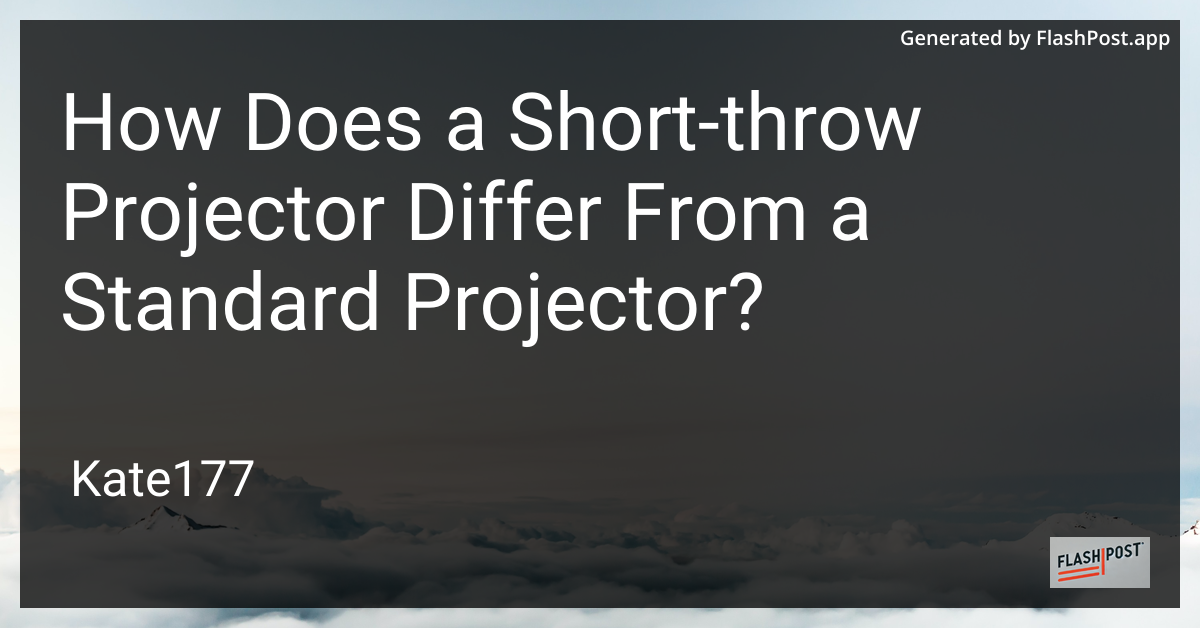
In the world of home entertainment and business presentations, projectors play a crucial role in delivering an immersive and interactive experience. With the vast array of projectors available in the market, it's essential to understand which type best suits your needs. Two common types are short-throw projectors and standard projectors. This article explores the key differences between them, offering insights to help you make an informed decision.
Understanding Short-Throw and Standard Projectors
What is a Short-Throw Projector?
A short-throw projector is specifically designed to project large images from a short distance. It utilizes advanced lens technology to create a big picture in compact spaces. This type of projector is particularly useful in scenarios where space is limited.
What is a Standard Projector?
A standard projector, on the other hand, requires more throw distance to project a comparably sized image. These projectors are ideal for larger rooms where there is ample space between the projector and the screen.
Key Differences Between Short-Throw and Standard Projectors
1. Throw Distance
- Short-Throw Projectors: Can project a 100-inch image from as little as 4-6 feet away.
- Standard Projectors: Typically require a throw distance of 8-12 feet to achieve the same screen size.
2. Space Utilization
- Short-Throw Projectors: Ideal for small rooms or spaces where it's difficult to mount the projector far from the screen.
- Standard Projectors: Best suited for larger rooms where space constraints are not a primary concern.
3. Installation and Setup
When setting up a projector, mounting options and alignment are crucial. For those looking to mount their projector, finding great projector mount deals is vital. Additionally, learning how to mount a projector correctly ensures a perfect viewing experience.
4. Image Quality
- Both types of projectors can deliver excellent image quality, but the proximity of short-throw projectors can sometimes lead to fewer shadows and disruptions, creating a more seamless viewing experience.
5. Cost Implications
- Short-Throw Projectors: Often more expensive due to advanced lens technology.
- Standard Projectors: Generally more affordable.
Benefits and Applications
- Educational Settings: Short-throw projectors are beneficial in classrooms, offering large images without shadow interference.
- Home Theaters: Ideal for compact spaces to avoid lights and shadows disrupting the viewing experience.
- Business Presentations: Standard projectors can be advantageous in large conference rooms where distance isn't an issue.
For those considering a wall-mounted setup, it's worth exploring the benefits of using a wall-mounted projector setup to maximize your space and setup flexibility.
Final Thoughts
Choosing between a short-throw and a standard projector depends largely on your specific needs and environment. Whether you prioritize space constraints or cost, understanding the key differences will guide you to the best choice for your setup. Evaluate your space, consider your budget, and decide which features are essential for your projector experience. Whatever you choose, both options offer the potential for a captivating and engaging projection setup.